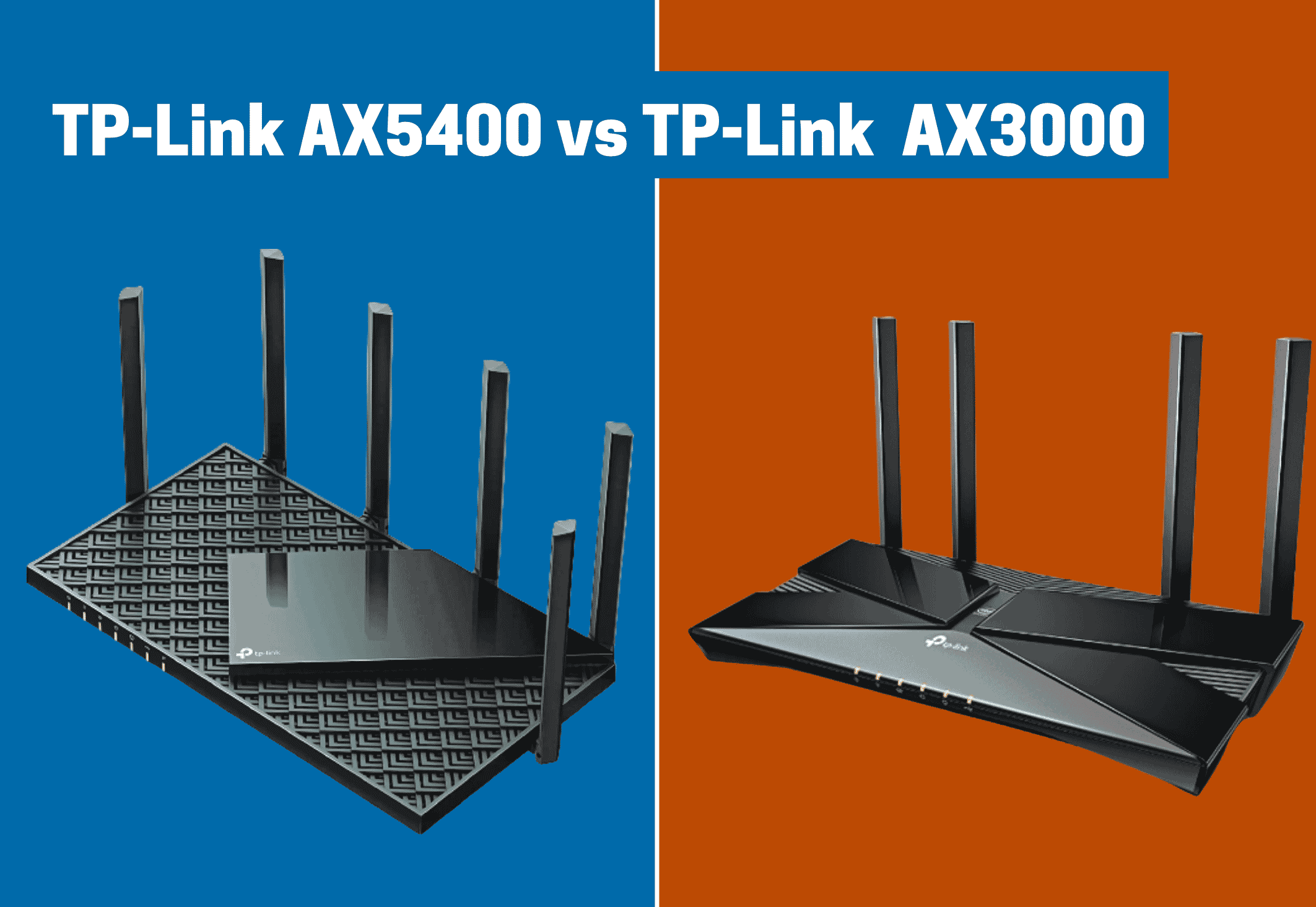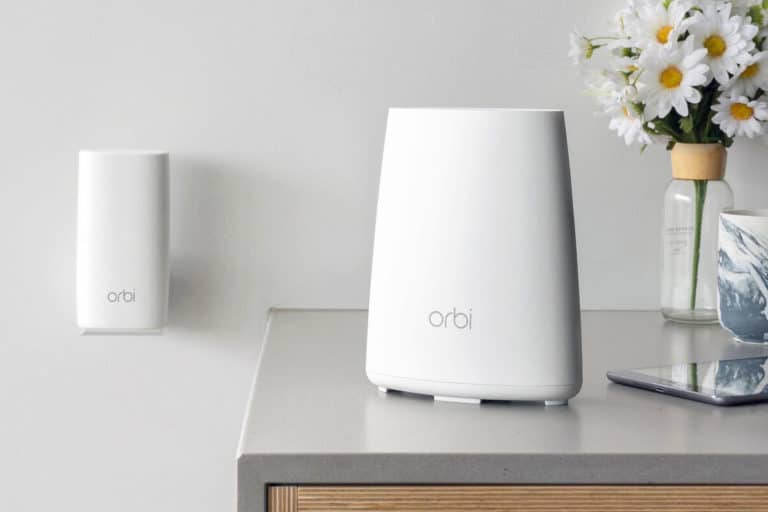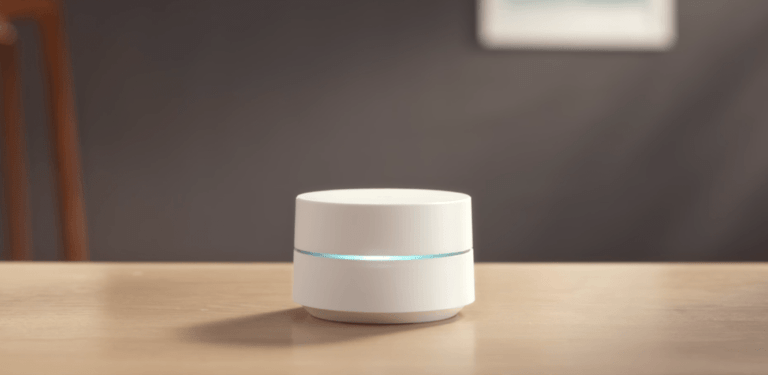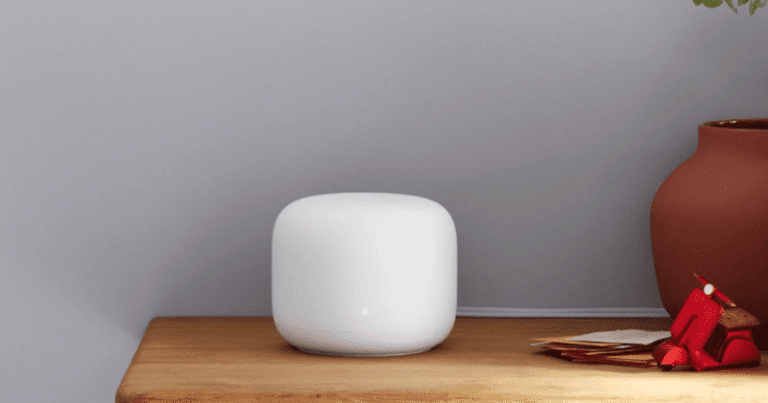TP-Link AX5400 vs AX3000: Which Wi-Fi 6 Router is Best For Your Home?
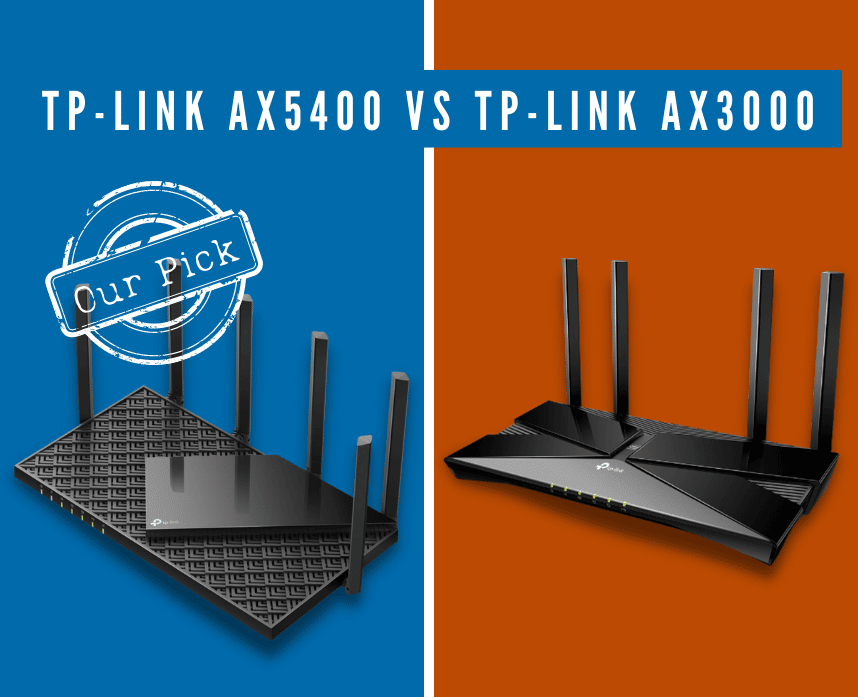
TP-Link is one of the most reliable wireless router brands in the market. They’ve manufactured good routers at a very reasonable price. But among the routers in the TP-Link Archer series, which is better between TP-Link AX5400 vs AX3000?
For us to determine which router is better, there are a lot of factors to consider. But let’s narrow it down to the router’s performance, specs, features, speed, coverage, ratings, and cost.
Generally, these two routers are some of the most reliable in the market, along with their reasonable price point. The AX5400 offers more advanced features, while the AX3000 offers a more energy-efficient home.
Without further ado, let the comparison battle begin!
Table of Contents
TP-Link AX5400 vs AX3000: In a nutshell
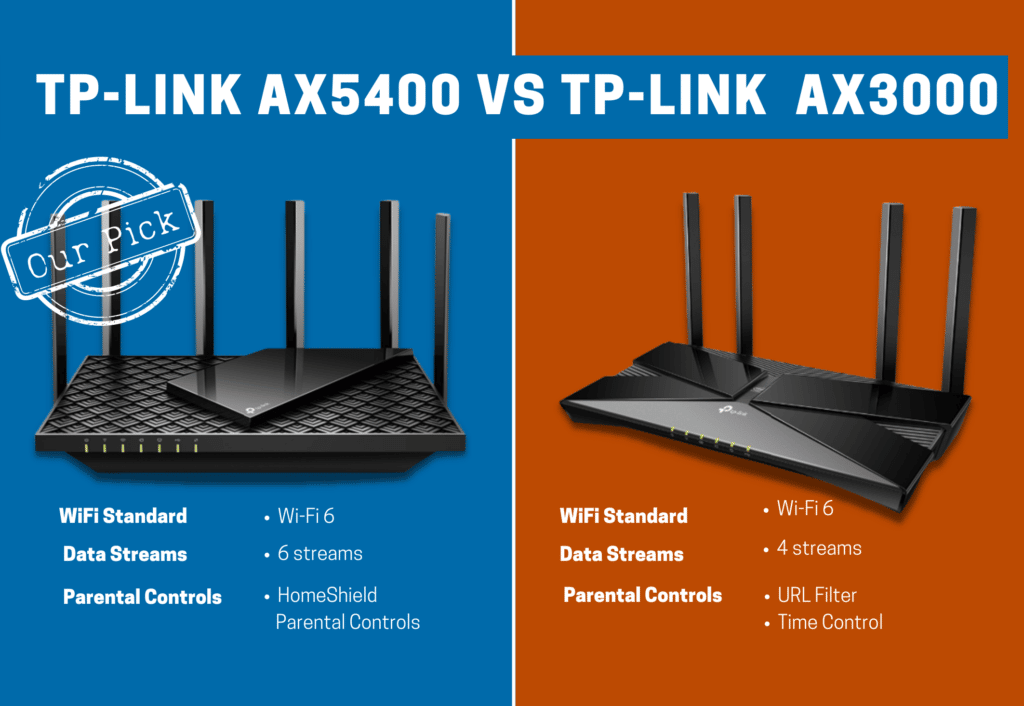
TP-Link AX5400 (Archer AX73) is a 6-stream router that fully supports Wi-Fi6, 4×4 MU-MIMO, and OFDMA. With these technologies, it can easily manage up to 200 wireless devices.
The 6 high-powered antennas, high-power FEM, beamforming, and 4T4R ensure wider and stronger wireless signals. Additionally, it is compatible with TP-Link OneMesh. So, extending the wireless coverage range is smoother and more flexible.
Additionally, wi-fi speeds can go as high as 4.8 Gbps to 5.4 Gbps. The router also has more advanced features, including HomeShield Security and HomeShield Parental Controls.
TP-Link AX3000 (Archer AX50) is a 4-stream router that supports Wi-Fi6 and OFDMA. With next-gen 3Gbps speeds, you can enjoy fast and smooth streaming and gaming.
The 4 high-powered antennas, high-power FEM, and beamforming guarantee you a strong, reliable wireless coverage. Additionally, the Target Wake Time (TWT) technology makes your devices more energy-efficient.
AX5400 and AX3000 are both wi-fi 6 dual-band routers, meaning they only have 2 frequency channels: 2.4GHz and 5GHz. Also, both of them are easy to use! They can be easily set up on the Tether App or on TP-Link’s website.
TP-Link AX5400 vs AX3000: Performance
In order to determine which router is better in terms of performance, let’s examine the specifications, hardware, and features.
When it comes to choosing any new device, the specifications and features make the difference. Ideally, now that technology is rapidly evolving, it’s best to future-proof your devices.
Why? Well, you don’t want to replace your devices every now and then, right?
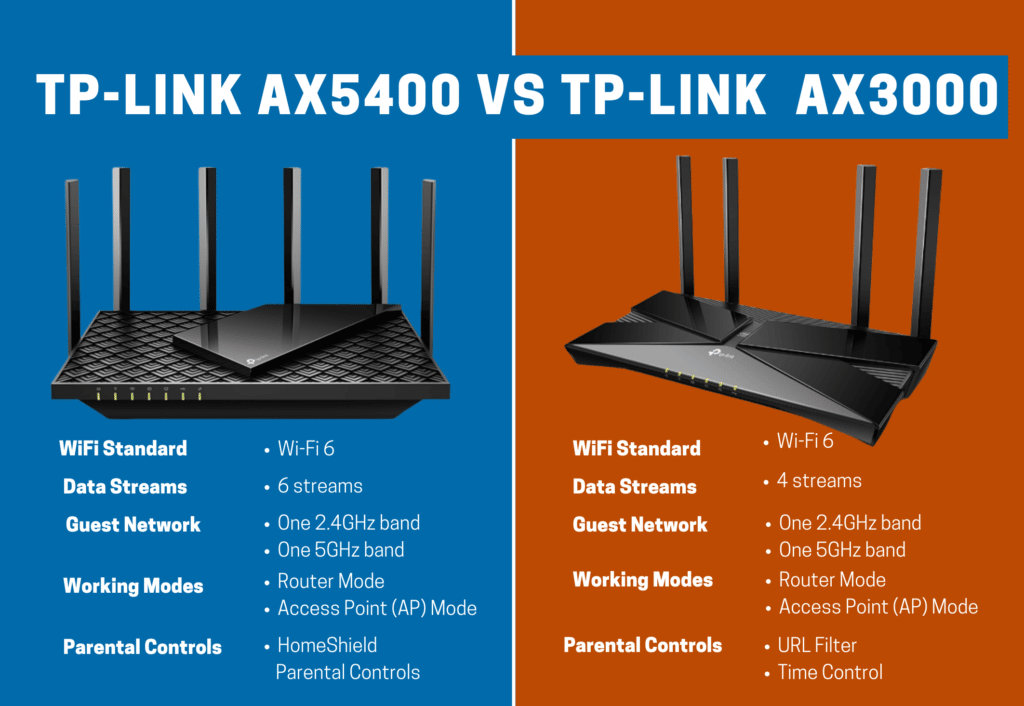
| Specifications List | TP-Link AX3000 | TP-Link AX3000 |
| WiFi Standard | Wi-Fi 6 | Wi-Fi 6 |
| Data Streams | 6 streams | 4 streams |
| Guest Network | One 2.4GHz band One 5GHz band | One 2.4GHz band One 5GHz band |
| Working Modes | Router Mode Access Point (AP) Mode | Router Mode Access Point (AP) Mode |
| Parental Controls | HomeShield Parental Controls | URL Filter Time Control |
| Cloud Service | Auto Firmware Upgrade OTA Firmware Upgrade TP-Link ID DDNS | Auto Firmware Upgrade OTA Firmware Upgrade TP-Link ID DDNS |
Looking at the table, the AX5400 offers more advanced features compared to AX3000. It includes data streams and parental controls.
Firstly, the AX5400 has 6 data streams while AX3000 has 4. Ideally, more data streams mean the router can simultaneously communicate more data to more devices. So, more connected devices can enjoy fast internet speeds without worrying about lagging or buffering.
Think of data streams as paying for groceries. When more people line up for a single counter, there’s traffic and congestion. It slows down payment, and everyone in line gets frustrated.
But when there are 4 or 6 counters open, payments and transactions are a lot smoother and faster. Plus, people can just move where the line is shorter.
Now, let’s talk about parental controls. The AX5400 comes with a HomeShield subscription, and AX3000 doesn’t. So the AX3000 can only do basic ones such as URL filtering, where parents can filter or block websites with malicious content. Another one is time managing through TWT.
Winner: AX5400 (Archer AX73)
Hardware Specs
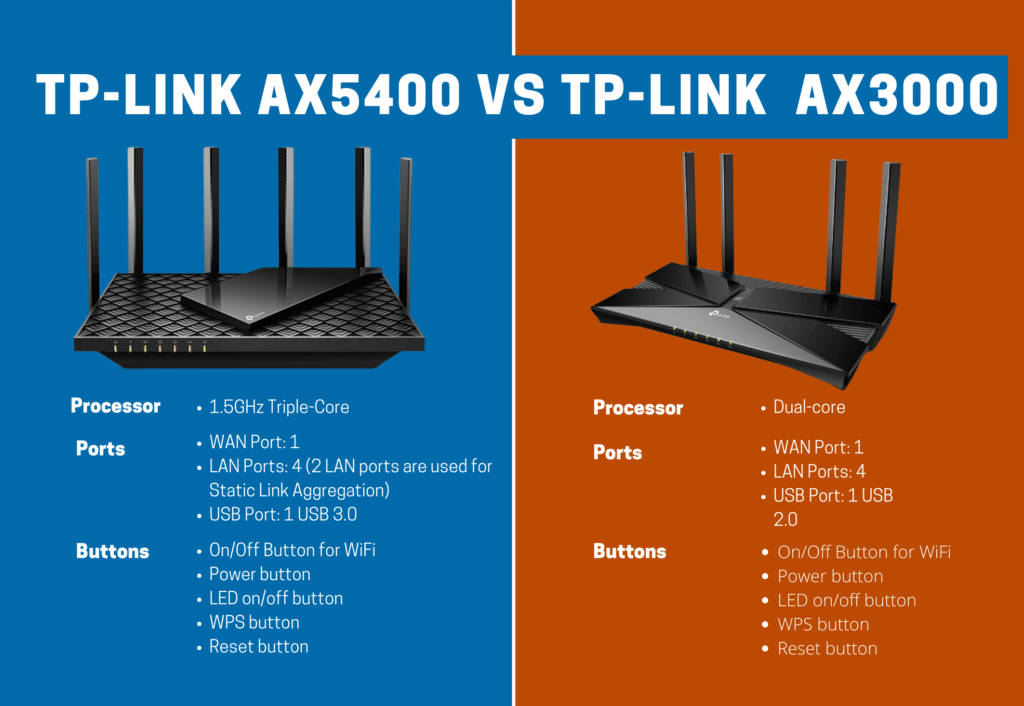
| Specifications List | TP-Link AX5400 | TP-Link AX3000 |
| Processor | 1.5GHz Triple-Core | Dual-core |
| Ethernet Ports | 1 WAN Port 4 LAN Ports (2 LAN ports are used for Static Link Aggregation) | 1 WAN Port 4 LAN Ports |
| USB Ports | 1 USB 3.0 | 1 USB 2.0 Port |
| Power Button | ✔ | ✔ |
| Wi-Fi Button | ✔ | ✔ |
| LED Button | ✔ | ✔ |
| WPS Button | ✔ | ✔ |
| Reset Button | ✔ | ✔ |
In terms of processor, both routers are actually a bit dated. Newer routers either have quad-core or octa-core processors. Nevertheless, the AX5400 is still better, processor-wise.
Looking at the rest of the hardware specs, AX5400 and AX3000 are pretty much the same. Both have the same buttons, number of ports for wired connection, and power voltage.
Winner: AX5400 (Archer AX73)
TP-Link AX5400 vs AX3000: Wi-Fi Speed and Coverage
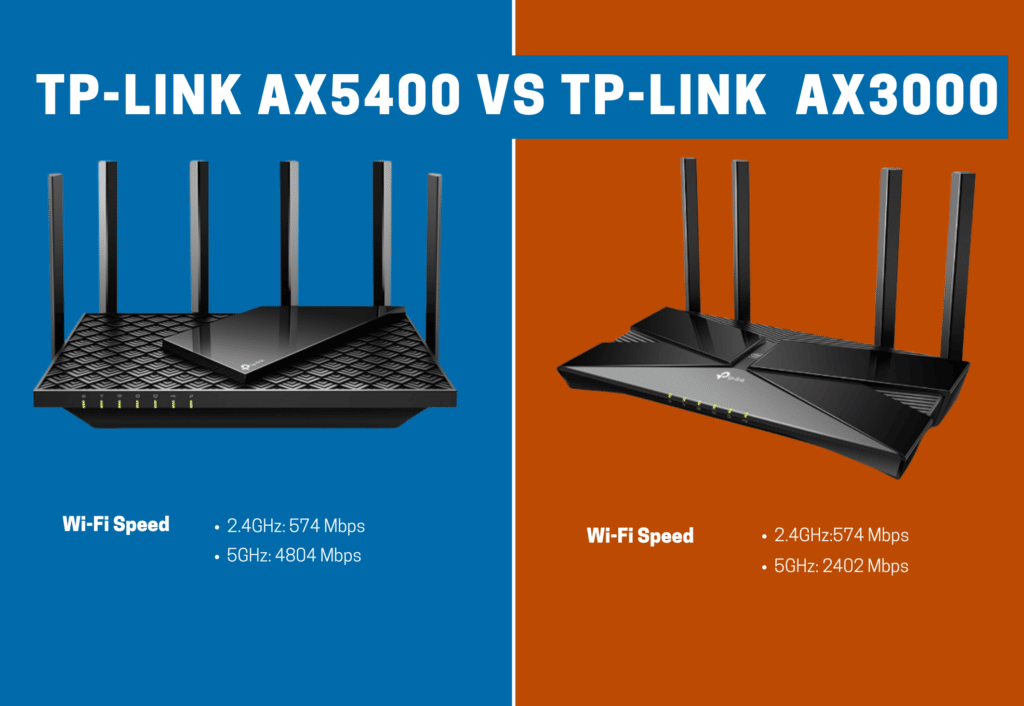
| TP-Link AX5400 | TP-Link AX3000 |
| 2.4 GHz: 574 Mbps | 2.4GHz: 574 Mbps |
| 5 GHz: 4804 Mbps | 5GHz: 2402 Mbps |
Both routers can support the same speed of 574 Mbps on the 2.4GHz band. But, AX5400 has better speed rates on the 5GHz band.
Additionally, AX5400 also has a ‘warp speed’ system that drastically boosts the 5GHz signal strength up to 5.4 Gbps. Video streaming and gaming would be much more enjoyable for sure!
Winner: AX5400 (Archer AX73)
Wi-Fi Coverage
| Specs | TP-Link AX5400 | TP-Link AX3000 |
| Beamforming | ✔ | ✔ |
| MU-MIMO | ✔ | ✖ |
| OFDMA | ✔ | ✔ |
| Airtime Fairness | ✔ | ✔ |
| DFS | ✔ | ✔ |
| High-power FEM | ✔ | ✔ |
| 4T4R | ✔ | ✖ |
| Antennas | 6 high-powered antennas | 4 high-powered antennas |
In terms of wi-fi capacity, the AX5400 bests AX3000 because of its future-proof specs. The AX5400 is powered by 4×4 MU-MIMO, which is required for Wi-Fi 6 and WiFi 6E.
Also with MU-MIMO, the router can easily send data to up to 200 wireless devices at the same time. It makes streaming 4k/8k videos, gaming, and browsing fast and really smooth.
The AX5400 also bests AX3000 in terms of the wireless signal strength and coverage. Both have beamforming, OFDMA, and high-power FEM, but AX5400 has more antennas. These antennas guarantee faster speeds and more coverage.
Winner: AX5400 (Archer AX73)
TP-Link AX5400 vs AX3000: Features and Design
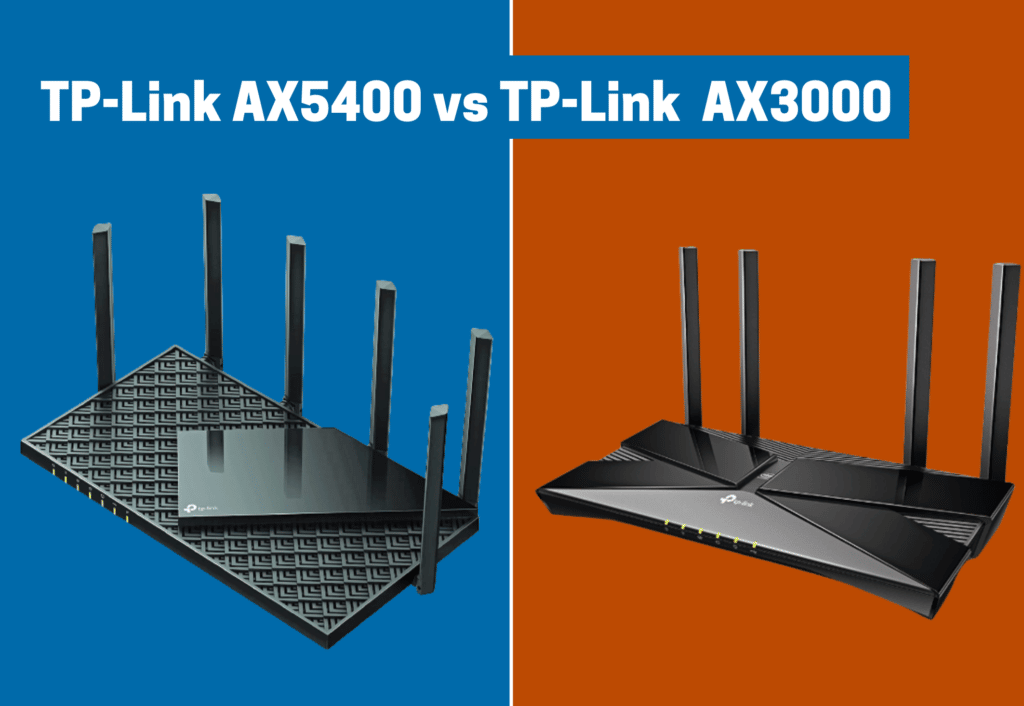
| Features and Design | TP-Link AX5400 | TP-Link AX3000 |
| HomeShield Secure | ✔ | ✖ |
| HomeShield Parental Controls | ✔ | ✔ |
| OneMesh Compatibility | ✔ | ✖ |
| Size and Dimensions (WxDxH) | 10.7 × 5.8 × 1.9 in | 10.2 × 5.3 × 1.5 in |
| Ease of Use (Easy set up on the Tether App or TP-Link website) | ✔ | ✔ |
In terms of features, the AX5400 has a lot more to offer. It’s compatible with OneMesh, so extending wireless coverage is more manageable. Additionally, it comes with a HomeShield subscription.
TP-Link Homeshield has the following functions and features:
- HomeShield Security
HS Security protects your data and your home network. It prevents information leakage and IoT device attacks. Additionally, it has other features like a malicious website blocker, IPS, and home network scanner.
- HomeShield Parental Controls
HS Parental Controls are very convenient for parents who want to keep track of their kid’s online activities. Parents or admins can create up to 16 user profiles, filter and block contents, set time limits, and grant more online time rewards.
- Comprehensive Daily or Monthly Reports
This feature is great if you’re really keen on monitoring your family’s online activities. You can get reports on the following:
- Browser history
- Internet use summary/overview
- Online time data
- Network security stats
- End device stats
- Customizable Quality of Service
Prioritize devices that need more and stronger bandwidth through this feature. You can assign a specific bandwidth either for gaming or working.
The AX3000 is slightly smaller compared to AX5400. This is great if you’re planning to move your router here and then.
The AX5400 is designed to have better airflow and ventilation to make the device cooler and more efficient. The air vents prevent the device from overheating, so you can benefit from the router’s full potential.
Winner: AX5400 (Archer AX73)
TP-Link AX3000 vs AX6000: Cost and Customer Ratings
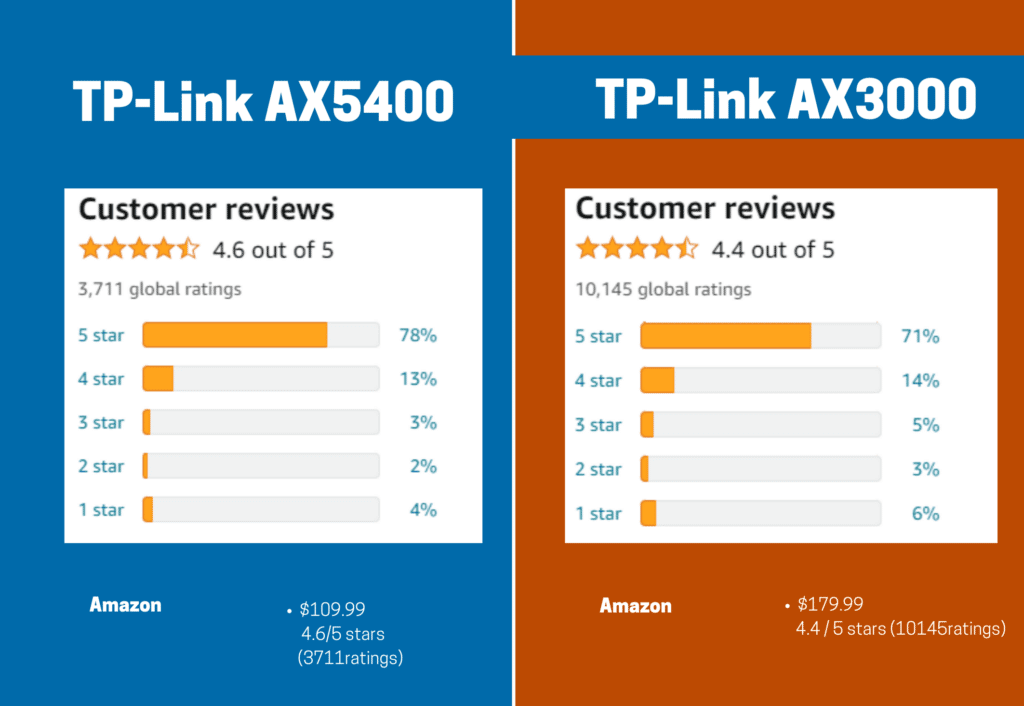
For costs, the AX3000 is a lot cheaper compared to AX5400. So if you’re looking for affordable routers, with AX3000’s capabilities, this is a good router to go.
Although AX5400 has more reviews, both routers received a lot of positive reviews on Amazon and on the TP-Link website.
Some even said that it’s the best router they’ve ever had. Customers also loved the fast speeds and smooth wi-fi experience on both routers.
When you buy either of the two routers, you will receive the router, an ethernet cable, a power adapter, and a manual.
If you plan to buy the AX5400 and want a OneMesh system, you need to purchase the mesh system separately.
Cost Winner: AX3000 (Archer AX50)
Ratings Winner: AX5400 (Archer AX73)
Our Verdict: TP-Link Archer AX5400
TP-Link is one of the leading router makers in the market. Looking at the specs, both TP-Link AX5400 (Archer AX73) and TP-Link AX3000 (Archer AX50) are good-performing routers.
We believe that the best router is the one that suits your needs. But in this comparison battle, the AX54000 wins specs, features, speed, and wireless range-wise. With MU-MIMO and 6 data streams, you’ll never have to worry about anything!

